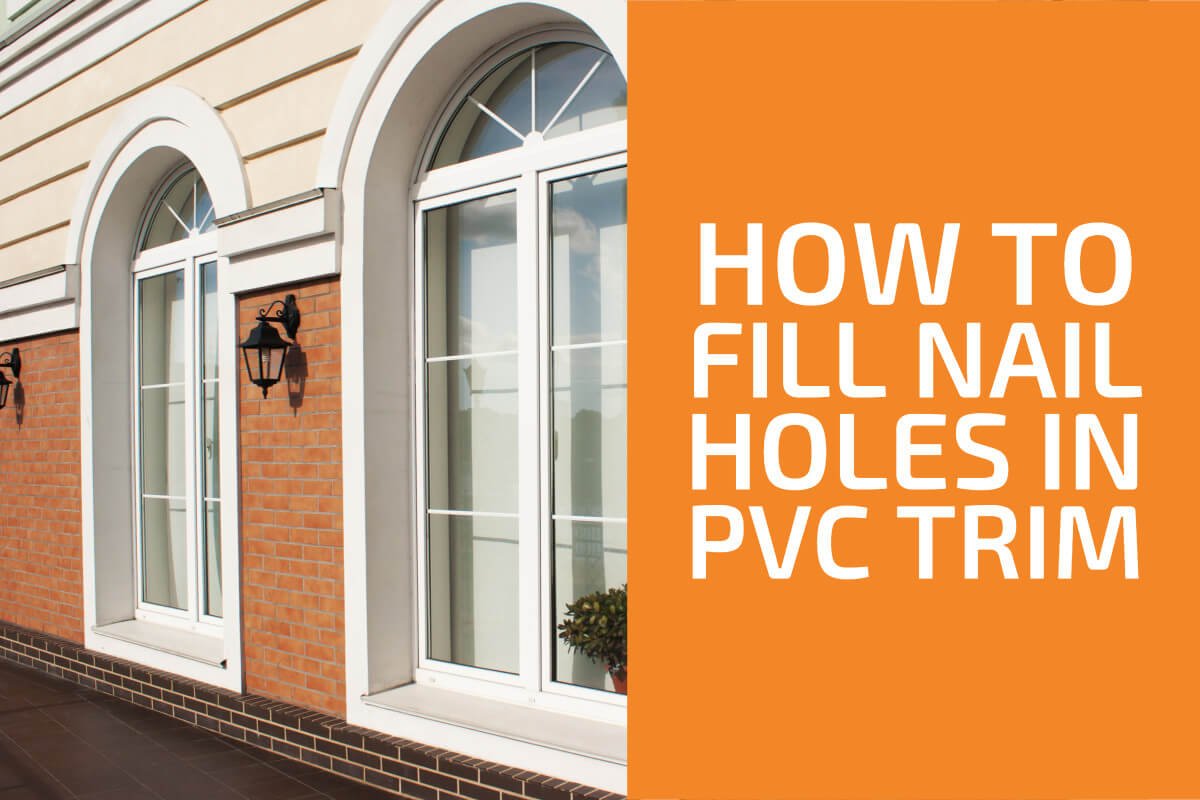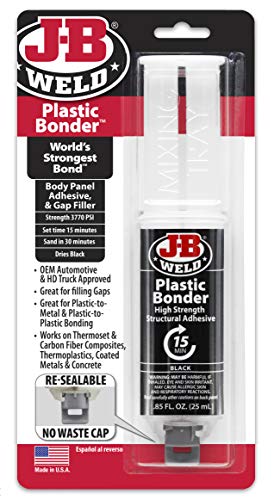
PVC trim does usually look very nice. However, maybe you inserted nails or screws where they didn’t belong, and then had to remove them. If this is the case, then you now have holes in your PVC trim. Today, we’re going to teach you exactly how to fill nail holes in PVC trim.
There are a variety of materials that you can use for this task, which is one thing that we will talk about. We will then also provide you with a step-by-step tutorial on how to get the job done.
7 Best Materials for Filling PVC Trim Nail Holes
There are a variety of materials that can be used in order to fill PVC trim nail holes. Let’s take a look at all of the possible materials right now.
1. Epoxy PVC Nail Hole Filler
 The best material to use for this task is a two-part epoxy PVC nail hole filler. This is a very special type of two-part epoxy that is designed specifically to be used with PVC. Technically speaking, this is a type of adhesive or glue.
The best material to use for this task is a two-part epoxy PVC nail hole filler. This is a very special type of two-part epoxy that is designed specifically to be used with PVC. Technically speaking, this is a type of adhesive or glue.
It features properties that allow it to properly bond with the plastic, and it also doesn’t shrink or expand. Moreover, it’s also extremely easy to sand down. That said, it’s a little messy because you have to mix it, but it does produce by far the best results. Also, you can usually find PVC nail hole filler in the exact same color as PVC.
2. Two-Part Epoxy
If you don’t have a special nail hole filler for PVC, you can always use basic two-part epoxy. This type of epoxy bonds very well with plastic, it’s extremely durable, waterproof, and it dries fairly quickly too. Two-part epoxy also should not expand or shrink, thus making it perfect for filling nail holes.
That said, you do want to try to find epoxy that matches the color of the PVC trim you have. Moreover, do be aware that not all epoxies can be painted over, which may be an issue.
3. Silicone Caulking
 Perhaps one of the best alternatives for filling PVC trim holes is silicone caulking. Silicone caulking is very easy to use thanks to the small nozzle at the front of the tube. Therefore, inserting it into PVC trim nail holes should be fairly straightforward. Moreover, silicone caulk should bond just fine with the PVC, and it also shouldn’t expand or shrink too much. The caulking may shrink a little bit as it dries, but you can apply a second layer if need be.
Perhaps one of the best alternatives for filling PVC trim holes is silicone caulking. Silicone caulking is very easy to use thanks to the small nozzle at the front of the tube. Therefore, inserting it into PVC trim nail holes should be fairly straightforward. Moreover, silicone caulk should bond just fine with the PVC, and it also shouldn’t expand or shrink too much. The caulking may shrink a little bit as it dries, but you can apply a second layer if need be.
Caulking is of course heat resistant and waterproof, so that is a bonus. Moreover, silicone caulking is also white in color, which should match white PVC trim.
4. Vinyl Spackling
 The next material that you can use to fill nail holes in PVC is vinyl spackling. Vinyl spackling is a rather perfect material to use for this task as it contains elastic polymers.
The next material that you can use to fill nail holes in PVC is vinyl spackling. Vinyl spackling is a rather perfect material to use for this task as it contains elastic polymers.
For one, this means that it will bond easily with the PVC trim. Moreover, it also means that it shouldn’t expand or shrink, and it should fill that hole perfectly. This kind of spackling will also not crumble or crack over time.
That said, using this material can be a bit messy.
5. Wood Putty/Filler
Although this is certainly not the first material that we would recommend using for this task, wood putty or wood filler will do the trick in a pinch. Wood putty or wood filler should not shrink or expand, so it should do a good job at filling the hole, plus it can also be painted over, which for many people is going to be a bonus.
That said, putty and wood filler might not create the best bond between it and the PVC.
6. Joint Compound
另一個選項在你的處理是使用一個年代imple joint compound. Joint compound is not the first material of choice here, but it should bond with the PVC, and it also shouldn’t crack or shrink as it dries. Joint compound is not the most durable material out there, and it isn’t waterproof either, but the bonus is that it can be painted over very easily.
Therefore, if you plan on painting your PVC trim, then keep the joint compound as an option.
7. Bondo
Bondo is another material of choice for this task. Bondo is specially designed as a filler. It is easy to get into small areas, it doesn’t expand or shrink as it dries, it forms a solid and waterproof layer, and it will adhere to PVC just fine. In fact, besides the PVC nail hole filler, Bondo might just be your best bet.
How to Fill Nail Holes in PVC Trim
Filling nail holes in PVC trim is best done using PVC nail hole filler. Follow the simple steps below to fill nail holes using this material.
1. Mix the Filler
In a plastic container, mix together both parts of the two-part PVC nail hole filler epoxy. Make sure to follow the manufacturer’s instructions in terms of the mixing process. You can then move on to the next step once the ideal consistency has been achieved.
2. Fill the Holes
You can use either your fingers or a small putty knife to fill the nail holes. Just take the PVC nail hole filler and insert it into the small nail holes as best you can. Make sure to leave a bit of a crown that you can sand off later.
3. Sand the Filler
Use either 100 grit or 120 grit sandpaper to sand the PVC nail hole filler until it is flush with the PVC trim.
Mistakes to Avoid, Tips & Tricks
Lastly, here are some tips to keep in mind when doing this task:
- You can use whatever material you like for this task, as long as it bonds with PVC
- 這是一個好主意to wear gloves when using these fillers, some of them can bond to skin and be quite messy
- Always cover the floor before starting this process, as you don’t want these materials getting on the floor below
Summary
As you can see, filling nail holes in PVC trim is about as easy as it gets. As long as you use the right materials, it’s a fast and painless task.
